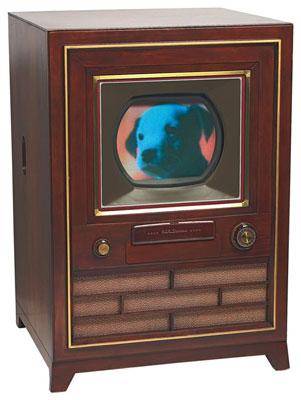 Colour TV broadcasts began in Australia in March 1975, a mere 34 years ago. But the first demonstrated colour transmission in the world happened way back in July 1928, by a gentleman by the name of John Logie Baird.
Colour TV broadcasts began in Australia in March 1975, a mere 34 years ago. But the first demonstrated colour transmission in the world happened way back in July 1928, by a gentleman by the name of John Logie Baird.
As you would expect, Baird’s first colour TV transmission was of the mechanical variety, using a trio of Nipkow discs with each a different primary colour. 10 years later, Baird was at it again with the world’s first colour broadcast.
But it wasn’t until the 1940s that colour TV became a real focus for the medium. In 1940, US TV network CBS began experimenting with colour-enabled electro-mechanical systems. Because these displays weren’t viewable on the black and white TVs in American’s homes, the demonstrations were restricted to employees and limited press.
In 1944, John Logie Baird continued to place his mark on the development of TV by giving the first demonstration of a fully electronic picture tube, and in 1947 RCA showed off the first fully electronic colour TV.
But as with any new technology, you need to have the content to back up the hardware. It wasn’t until 1950 that CBS started showing regular colour broadcasts, with an hour of programming every Saturday. But it was a case of not enough hardware, with a lack of compatible TV sets meaning that CBS decided to stop broadcasting colour in 1951.
In 1954, RCA released the CT-100 colour television, which was the turning point for colour, despite limited sales, average performance and a high price. By 1959, NBC – which was owned by RCA – had increased its colour broadcast offering so dramatically that in 1965 almost all their primetime schedule was broadcast in colour.
History of TV is Giz AU’s month-long look back at the development of the world-changing medium and its influence on our daily lives.